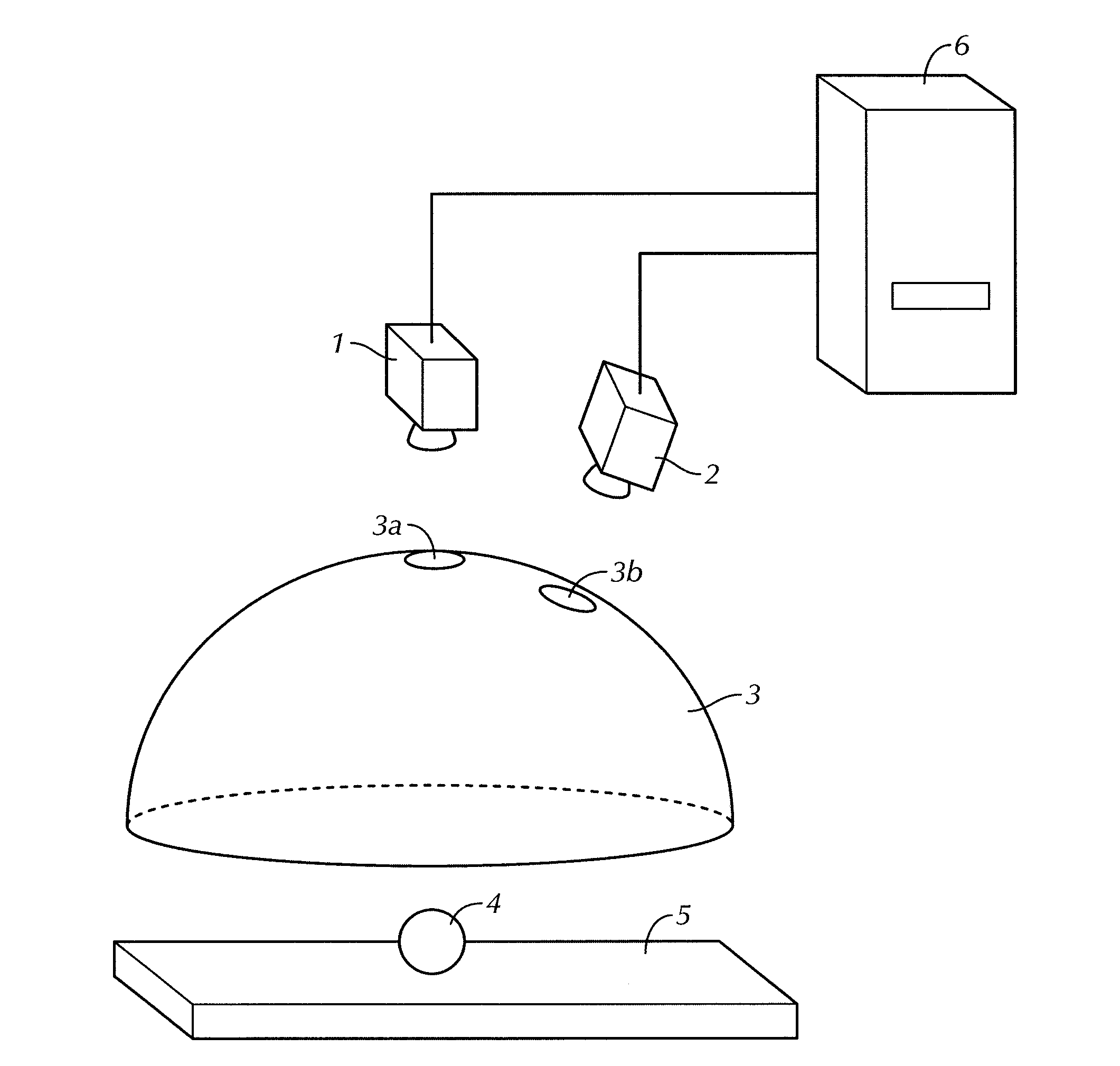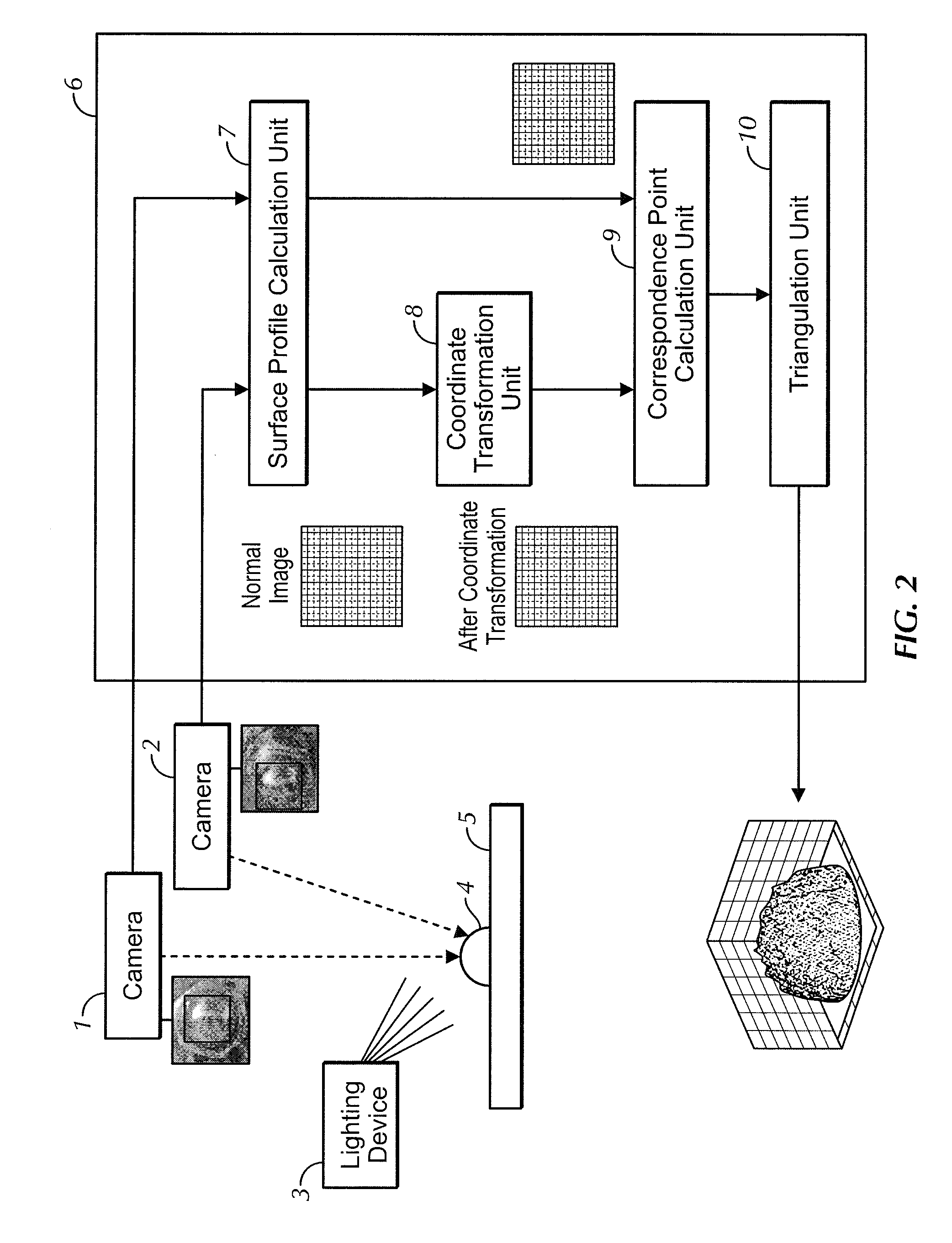Profilometer
a technology of profilometer and light source, applied in the field of profilometer, can solve the problems of difficult analytically to obtain the precise distribution of light source li(p, , ) and objects whose reflectance properties are not uniform, and achieve the effect of satisfying accuracy
- Summary
- Abstract
- Description
- Claims
- Application Information
AI Technical Summary
Benefits of technology
Problems solved by technology
Method used
Image
Examples
first embodiment
[0045]A profilometer (normal measurement device) according to a first embodiment is used as one part of a three-dimensional measurement device for performing a three-dimensional measurement of a mirror surface object. As shown in FIG. 18, the three-dimensional measurement (triangulation) is a technique of examining the correspondence relationship of pixels from images photographed with a plurality of cameras of different imaging angle, and calculating a parallax to measure the distance. Normally, the corresponding pixel is examined by calculating the similarity with the luminance value as a feature quantity when examining the corresponding pixel.
[0046]If the measuring target is a mirror surface object, the luminance value photographed in the image does not represent the feature quantity of the object surface itself, but is determined by the reflection of the surrounding object. Therefore, when the mirror surface object is photographed with two cameras, as shown in FIG. 19, the posit...
second embodiment
[0097]In the first embodiment, a pattern in which the light emission intensity linearly changes with respect to the angle in the longitude direction as shown in FIG. 5A is used as an approximation solution of a lighting pattern with which the spectral characteristics in the regular reflection direction can always be detected in the photographed image even if the reflectance property changes. In the present embodiment, a pattern in which the light emission intensity linearly changes with respect to a latitude direction as shown in FIG. 15 is adopted. Such lighting pattern is also one approximation solution, and the influence of diffusion light can be substantially canceled out to enable the detection of the regular reflection light.
third embodiment
[0098]In a profilometer according to the third embodiment, a lighting device having a shape different from the first and the second embodiments is used. As shown in FIG. 16, a flat plate-shaped lighting device 11 is used in the present embodiment. In the present embodiment as well, the spectral distribution of the light emission at each position in the light emission region is differed at all positions. Specifically, similar to the first embodiment, when determining light emission by synthesis of light components of three colors of red light (R), green light (G), and blue light (B), each color is changed with respect to different directions as shown in FIG. 17. Here, the light emission intensity of R becomes larger towards the rightward direction, the light emission intensity of G becomes larger towards the leftward direction, and the light emission intensity of B becomes larger towards upward direction. The proportion of change in the light emission intensity is linear with respect...
PUM
 Login to View More
Login to View More Abstract
Description
Claims
Application Information
 Login to View More
Login to View More - R&D
- Intellectual Property
- Life Sciences
- Materials
- Tech Scout
- Unparalleled Data Quality
- Higher Quality Content
- 60% Fewer Hallucinations
Browse by: Latest US Patents, China's latest patents, Technical Efficacy Thesaurus, Application Domain, Technology Topic, Popular Technical Reports.
© 2025 PatSnap. All rights reserved.Legal|Privacy policy|Modern Slavery Act Transparency Statement|Sitemap|About US| Contact US: help@patsnap.com



